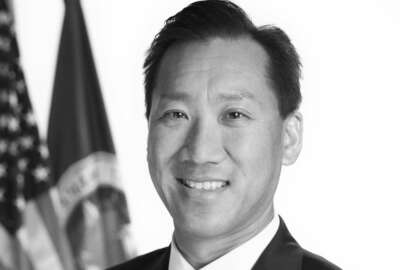

The President's Management Agenda was written or at least heavily influenced by a person or people who actually understand government and the civil service. Former...
This column was originally published on Jeff Neal’s blog, ChiefHRO.com, and was republished here with permission from the author.
The President’s Management Agenda (PMA) was released last week and got the usual pro and con coverage. When I read it one thought went through my mind: it was written or at least heavily influenced by a person or people who actually understand government and the civil service. Overall, I think it is a great start. Here are my thoughts on what I believe are some essential takeaways from the document:
It is not a quick shake-and-bake approach to reform. Too often we see proposals for simple fixes to complex problems. Folks on the political side are often looking the the quick illusion of a solution to help in the next election. The PMA addresses the complex and long-term nature of government reform head on. It says: “The President’s Management Agenda lays out a long-term vision for modernizing the Federal Government in key areas that will improve the ability of agencies to deliver mission outcomes, provide excellent service, and effectively steward taxpayer dollars on behalf of the American people.” Later it says: “Deep-seated transformation takes time and will not happen in one or two years.” Amen. The recognition that reform takes time to do correctly is important, because it tells me we may see some real and lasting reforms rather than quick fixes that fix nothing.
The PMA envisions reforms that are adaptable to changing conditions. It says: “The vision for reform must be multi-generational, enabling the Federal Government to adapt to changing needs over time. We cannot pursue short-term fixes only to see Government quickly become outdated once again.” This is critical and I agree wholeheartedly. Whatever management reforms are enacted, it is essential that the regulations, processes and tools be designed to evolve as the environment in which they operate evolves. Programs can be designed to change over time as needs change, or they can be carved in bureaucratic stone. The civil service rules are a great example. Many of them were carved in stone in 1949 and have changed little in the past 69 years. Look at what has happened in the world in since then. The government competes for talent in a world that few would have imagined in 1949, and it does it using a completely outdated civil service system.
Management reform in government should be a bipartisan effort. “The Administration believes that modernizing Federal Government represents a profound bipartisan opportunity to work across branches of Government and political differences to align the mechanics of government to better meet America’s needs,” the PMA says. This is something we often hear people say, but do not always see the follow-through. Our political system has become so toxic that bipartisanship is treated like a four-letter word. It is not. Our government does not serve only Democrats, only Republicans, or only any other party or nonaligned group. It serves everyone and the way it is managed is something that should include everyone on the political spectrum.
Government reform should be driven by mission requirements. The PMA mentions mission over and over. The devil is, of course, in the details. The real question is “what is the mission?” Real management reform is going to take a shared understanding of the many missions of government.
The federal workforce is a critical part of reform. The PMA says: “The workforce for the 21st Century must enable senior leaders and front-line managers to align staff skills with evolving mission needs. This will require more nimble and agile management of the workforce, including reskilling and redeploying existing workers to keep pace with the current pace of change.” Any successful organization needs to have the right talent in place to perform effectively. Government HR rules tend to work against flexibility and get in the way of having an effective workforce. On the other hand, some of those rules keep the civil service from becoming politicized or subject to reprisal for blowing the whistle on improper behavior.
Technology is absolutely critical. The PMA says: “Modern information technology must function as the backbone of how Government serves the public in the digital age. Meeting customer expectations, keeping sensitive data and systems secure, and ensuring responsive, multi-channel access to services are all critical parts of the vision for modern Government.” This is another area where government has not been able to evolve with our society. As information technology moved from the mainframe era to personal computers and then to mobile devices, we still have agencies that are dependent on antique systems that should have been given a graceful goodbye years ago. Government technology suffers from procurement rules that are too inflexible, contracting officers who do not or are not allowed to take advantage of the flexibilities that exist, and program management processes that make the entire process of deploying new systems an ordeal. On top of that, surveys such as the National Academy of Public Administration and ICF’s Federal Leaders Digital Insights study show that government does not adequately train its employees to use the systems it does successfully deploy.
Citizens are also customers, and the government needs to provide a 21st century customer experience. The PMA says: “Federal agencies will provide a modern, streamlined, and responsive customer experience across Government, comparable to leading private-sector organizations.” We have become so accustomed to being able to get information we need when we need it, that the bar has been raised for government. As my colleague Andrew LaVanway put it: “There’s this tremendous opportunity we can seize, because as soon as you provide something better to the customer, the customer will be willing and, in fact, excited to come back to you. I believe it’s these small moments that will renew our faith in government”
There is much more in the PMA that I will be covering in coming weeks. At this point, I believe it is an excellent start that, with some refinement and added planning, could be a roadmap for more effective management in government.
Jeff Neal is a senior vice president for ICF and founder of the blog, ChiefHRO.com. Before coming to ICF, Neal was the chief human capital officer at the Homeland Security Department and the chief human resources officer at the Defense Logistics Agency.
Copyright © 2025 Federal News Network. All rights reserved. This website is not intended for users located within the European Economic Area.

 Exclusive
Exclusive 